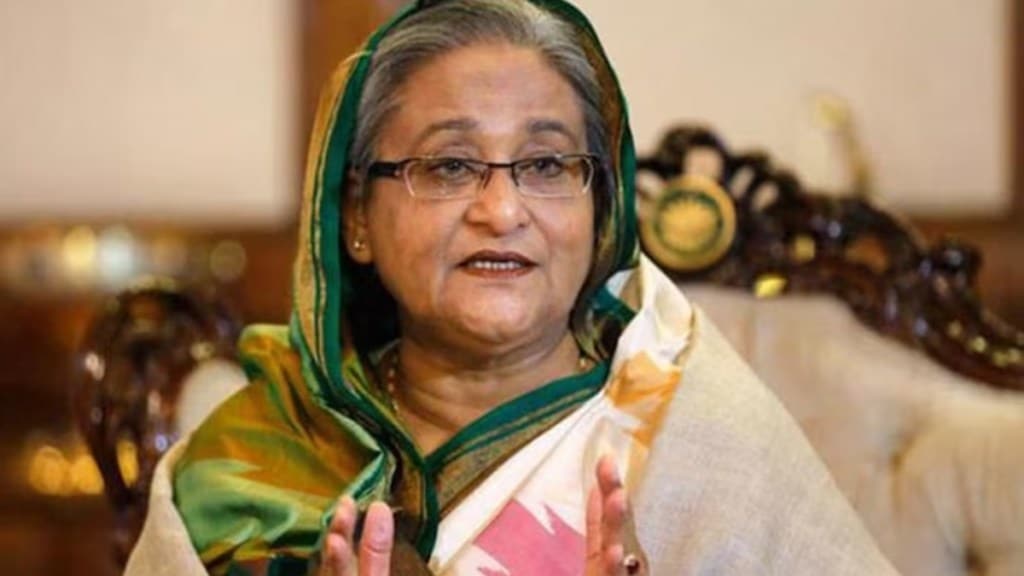Ahead of her tri-nation visit Bangladesh Prime Minister Sheikh Hasina has unveiled a 15 point outlook policy document on Indo Pacific. “This is a clear signal to all QUAD member nations (India, Japan, Australia and the US) that Dhaka is now willing to work with them to support a rule based international regime,” says a Bangladesh commentator.
The policy which envisions a free, secure, open, peaceful inclusive Indo-Pacific comes on the eve of Bangladesh PM’s visit to Japan, the US and the United Kingdom.
Sharing his views with Financial Express Online, Gautam Lahiri, a senior journalist and Bangladesh commentator, says, “Over the years Dhaka pursued a non aligned foreign policy. But it appears to be moving closer to a full embrace of the Indo-Pacific Strategy pursued by the United States and its partners in the region, which revolves around countering China.”
According to him, “Dhaka’s move for shifting its foreign should be seen through the prism of Japan Prime Minister Fumio Kishida’s grand plan for free and open Indo Pacific announced last month in Delhi. It emphasises building an economic zone encompassing Bengal North East in cooperation with Bangladesh .This zone will create an industrial value chain which attracted Dhaka to fulfill their aim to make Bangladesh a developed country by 2041.”
This month, UK Indo-Pacific Minister Anne-Marie Trevelyan also visited Bangladesh.
Chinese Influence
“China has stepped up its own influence in Bangladesh through infrastructure loans, which the US officials have privately described as bad deals for Dhaka,” opines Lahiri. In his view, “China’s rivals also worry about its expanded naval presence in the western part of the Indian Ocean region, including its military base off Djibouti. All of this lies in Bangladesh’s maritime neighborhood. China is also a major supplier of arms to Bangladesh. So getting Dhaka’s buy-in to the US Indo-Pacific vision would be a strategic victory.”
Even as Bangladesh embraces the Indo-Pacific Strategy, it is still trying to placate China, he says. “Dhaka’s own draft Indo-Pacific Outlook stipulates that it seeks to avoid rivalries and has no security goals. Observers note that calling it an “outlook” rather than a “policy” or “strategy” has a softer connotation,” he points out.
The Association of Southeast Asian Nations—which includes many states that have cordial relations with China—opted for the same term in its own Indo-Pacific statement. Dhaka has also not indicated that it would join the Quad.
QUAD Leaders Summit next month
The Maritime focused Indo-Pacific Strategy of Bangladesh comes ahead of the QUAD Leaders Summit scheduled to take place in Australia next month in Australia. The meeting will take place soon after the G7 Summit in Tokyo.
Some highlights of Bangladesh Strategy
It states that it will work with all the stakeholders for counter-terrorism, peace-building and peacekeeping initiatives in the Indo-Pacific Region.
The policy supports “Rules-based International Order” and also “Free and Uninterrupted Movement and Trade”.
In 2017 the US had announced its Indo-Pacific Strategy (IPS) and this centered around the Pacific and Indian Ocean. Japan, India and Australia joined this strategic initiative. The US has called Bangladesh to join in its Indo-Pacific Strategy back in 2018.
It has already been reported that countries like Japan, South Korea, Australia, and ASEAN countries have clarified their position on the Indo-Pacific region. And the UK, France, Germany, Canada (recently and the European Union too have clarified their position on the Indo-Pacific.

